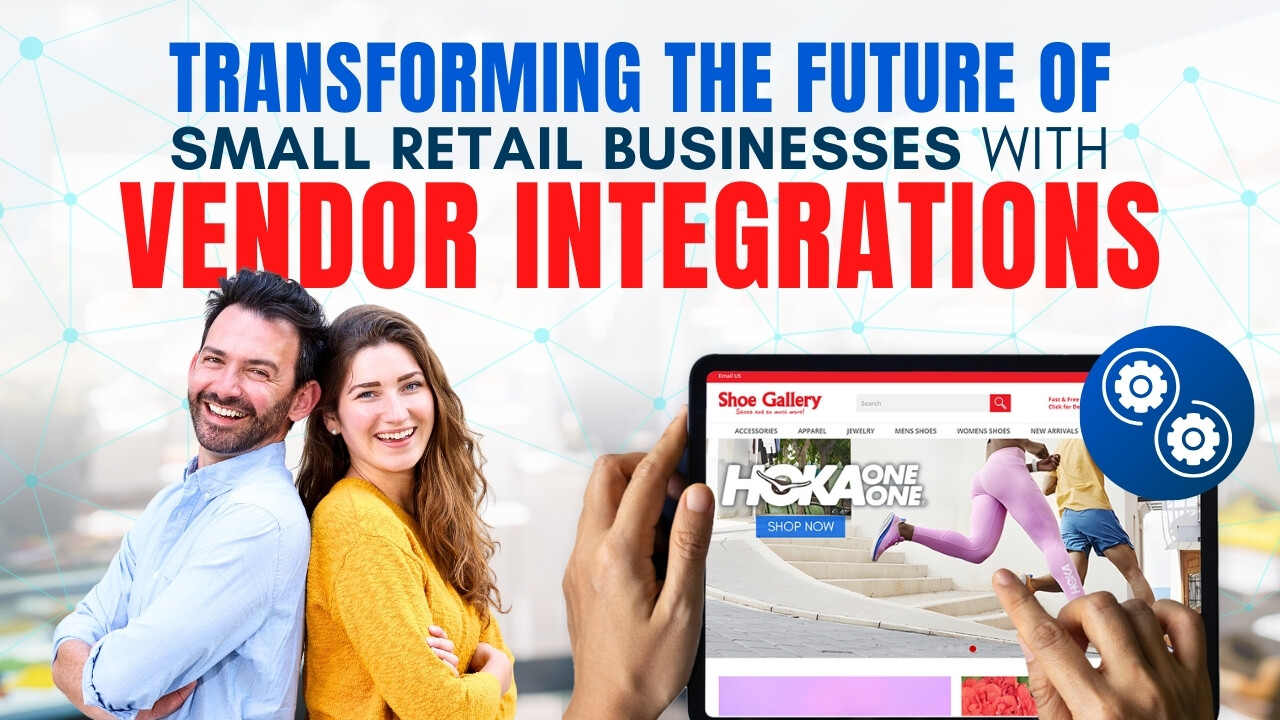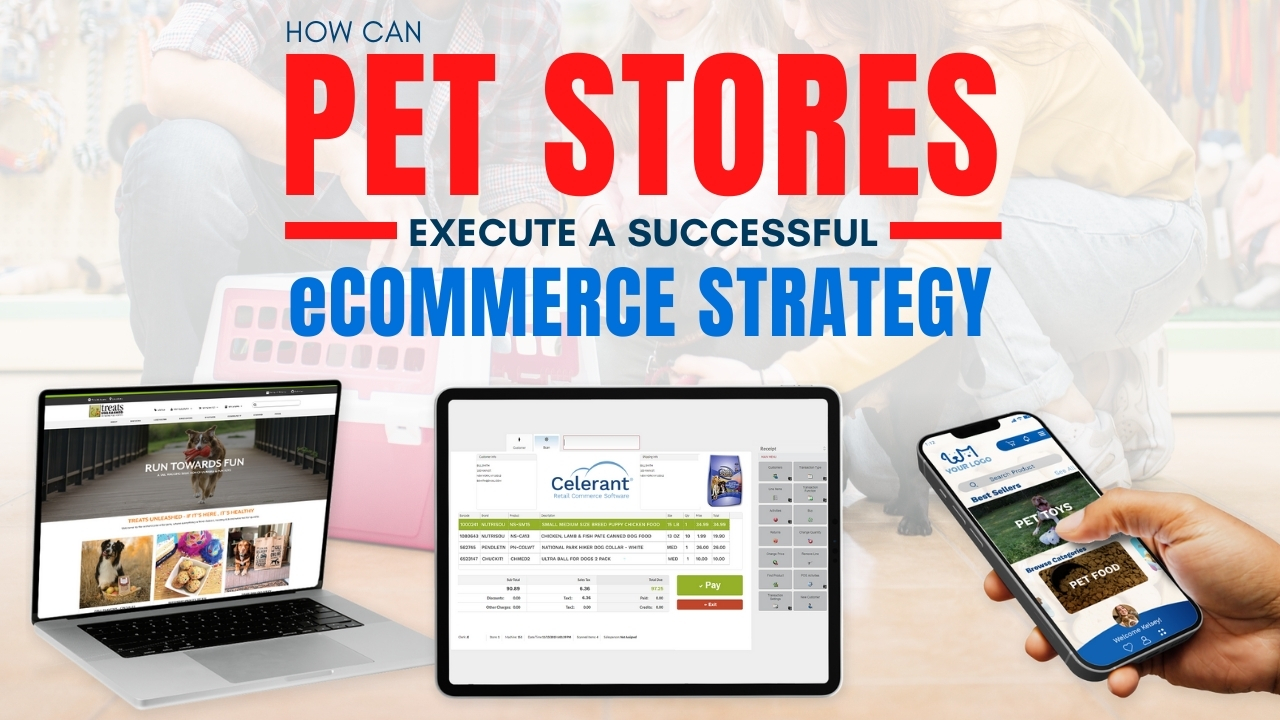Blog
Transforming the Future of Small Retail Businesses with Vendor Integrations
March 21, 2025 / 5 minute read / By Nick Borowitz

Blog

Only a decade ago, small retailers were fighting an uphill battle against eCommerce giants and big-box stores, struggling to maintain inventory, manage vendors, and keep customers satisfied.
Today, technology via software integrations—specifically to distributors and vendors—is leveling the playing field. And this goes beyond just automating inventory management. It’s the ability to connect directly to your vendors and use algorithms and data to ensure your inventory is precisely balanced for the evolving needs of business and the current trends that your customers might desire.
In this retail blog for small to medium businesses, we’ll discuss the benefits companies can gain when they utilize the integrations offered by their point of sale provider that connect them directly to their vendors.
Let’s set the scene first with a hypothetical situation that could have occurred in the far-reaching past of 2018.
The morning starts in a small retail business with a mountain of spreadsheets, phone calls, and endless manual data entry. Inventory management is a constant guessing game. Staff spend hours manually checking stock levels, creating purchase orders, and reconciling shipments.
Maintaining an accurate inventory was like trying to hit a moving target. Product information came through various channels–emails, spreadsheets, vendor portals–each requiring hours of manual updates.
Pricing discrepancies are common, and product specifications are frequently outdated. Small retailers fight daily against needless complexity and overwhelming administrative burdens.
Each task is a potential minefield of human error: a mistyped number here, a forgotten order there, disappointed customers everywhere, bad reviews, and ultimately, the waste of valuable resources.
Now comes the game-changers: advanced vendor integration systems that transform retail operations from the ground up. These aren’t only software solutions; they’re strategic tools that work behind the scenes, automating processes that could quickly burn up an entire workday.
Machine learning algorithms can actively predict inventory needs with remarkable precision. These systems track stock and analyze historical sales activity, consider external factors like local events and weather patterns, and even factor in social media trends.
The most sophisticated vendor integration platforms have become comprehensive business intelligence tools.
They do more than track products; they optimize the entire business operation. Automated purchase orders now generate themselves based on sophisticated algorithms. Systems dynamically optimize volume discounts, predict price trends, and even conduct essential vendor negotiations.
The best part is that these same digital tools can be implemented into a retailer’s point-of-sale retail system, where the operator can manipulate and interact with their data directly from one system. That very same data is also available in the back office systems, ensuring seamless access from anywhere within their business or across their sales channels.
A regional gardening supplies retailer tells a compelling story of transformation. Implementing an advanced vendor integration system reduced inventory management and automated tracking across 17 stores.
Drop shipping has evolved from a risky experiment to a strategic opportunity, allowing retailers to sell more merchandise from various vendors.
Modern systems allow retailers to offer thousands of additional products without the traditional inventory investment or space allocation. Imagine expanding your product lines, testing new markets, and providing localized offerings without tying up capital or physical storage space in physical stock.
These systems have created seamless customer experiences that were previously unimaginable. White-label packaging, consistent documentation, personalized options, and branded tracking communications distinguish drop shipped products from direct fulfillment.
Geographic optimization ensures products are shipped from the nearest vendor, minimizing delivery times and shipping costs.
Besides the benefits of drop shipping, retailers can take advantage of more online and eCommerce marketplaces like eBay and Amazon. Because of how fulfillment works with these websites, retailers can choose to ship a pre-set selection of fast-selling products to the marketplaces’ warehouses for fulfillment by the service. They can even sell products worldwide depending on customer types and merchandise desire for a given region or country.
The most revolutionary aspect of modern vendor integration is how it transforms vendor relationships. Gone are the days of evaluations based on gut feelings or personal connections.
Now, retailers can access multi-dimensional performance metrics that track everything from shipping times to product quality, communication effectiveness, and innovation potential.
One specialty foods retailer leveraged these insights to restructure their top vendor relationships, resulting in improved service levels and negotiated cost reductions averaging 4.7%. It perfectly illustrates how data can transform business partnerships from transactional interactions to strategic collaborations.
The impact extends far beyond operational efficiencies. Retailers using advanced vendor integration technologies report numerous improvements across their businesses.
Operating costs decrease through automation. Revenue increases through better inventory availability, and customer satisfaction soars due to more accurate information and reliable fulfillment.
These systems have become essential infrastructure for competitive retail operations. They enable small businesses to compete with larger competitors by providing tools previously available only to enterprise-level retailers.
The beauty of modern vendor integration is its accessibility. Implementation doesn’t require an all-or-nothing approach. Many successful retailers have taken a strategic, phased implementation:
Despite all the innovation, it’s important to remember that these are tools, not replacements for the insight that the human mind offers. The most successful retailers use technology to free up human potential, allowing staff to focus on customer relationships, strategic planning, and creative problem-solving.
As we move forward, the retail landscape will continue to evolve. However, the core principle remains unchanged: adaptability is the key to survival. Technology is no longer just a tool – it’s a strategic partner in business success.
For small and medium-sized retailers feeling overwhelmed by technological change, take heart. These systems are more accessible, affordable, and user-friendly than ever before. The competitive gap is widening, but it’s not too late to catch up.
The time to begin your integration journey is now. Your future self will thank you!
 2024 2024Pet stores need a robust eCommerce strategy to compete in the digital landscape with the use of… |